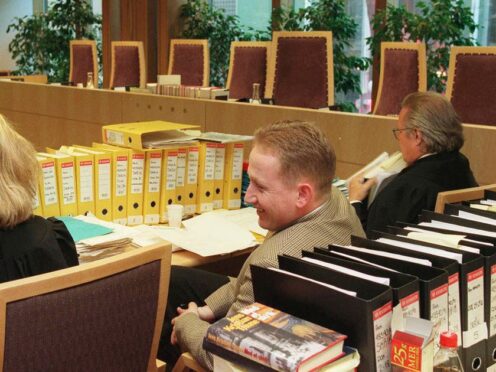Pal Enger, a talented Norwegian football player turned celebrity art thief who pulled off the sensational 1994 heist of Edvard Munch’s famed “The Scream” painting from the National Gallery in Oslo, has died.
Tina Wulf, press officer at Valerenga Fotball, an acclaimed Oslo soccer club for which Enger played as a teenager, told The Associated Press on Tuesday that the 57-year-old had died on Saturday evening.
She was unable to provide information into the circumstances of his death but said he had been in touch with Valerenga earlier this summer.

Citing family sources, Norwegian newspaper Dagbladet said Enger died in Oslo.
Enger served his first prison sentence at the age of 19, before he kicked off a long string of art and jewellery thefts in 1988 when he climbed into a window at the Munch Museum in Oslo and stole the artist’s painting “Love and Pain”.
More dramatically still, on February 12 1994 — the opening day of the Winter Olympics in Lillehammer, Norway — Enger managed to steal the “The Scream” from the National Gallery.
In the 50-second theft, videotaped by a security camera, two thieves climbed a ladder, broke a window and emerged with the painting, then valued at at least 55 million dollars (£43.4 million).
They left a postcard saying: “Thanks for the poor security”.
News of the theft of the painting made headlines around the world, and after his capture Enger became an instant national celebrity in Norway with documentaries and an international television series made of his story, including the 2023 documentary “The Man Who Stole The Scream”.
The painting was recovered undamaged after Enger confessed that he had hidden it in a secret compartment located in a living room table at his family’s home.
Enger was repeatedly convicted of art and other thefts and drug crimes over decades, and he continued to court media attention.

In 1999 he absconded while on an outing from a minimum-security prison and tormented police by turning up in a cafe frequented by celebrities in Oslo and granting television and newspaper interviews.
He was later rearrested after attracting attention by wearing sunglasses late at night.
During a prison stay in 2007 he started painting himself — first animals and later abstract motifs.
He debuted as a professional artist in 2011 with a series of abstract paintings exhibited at a Norwegian gallery.
The self-confessed art aficionado didn’t stop stealing, however.
In 2015, Enger was charged with stealing a total of 17 paintings from a gallery in central Oslo.
According to Norwegian media, police arrested him after he left his wallet and ID card at the scene.
His former lawyer Nils Christian Nordhus, cited by Dagbladet, described Enger as a “gentleman” thief who “many will miss” in his home country.
“Many people wonder how good a footballer Pal Enger could have become if he had stuck to a career,” Valerenga Fotball general manager Svein Graff said, adding that Enger had responded that he was not the best soccer player but he was the best criminal so he had chosen to follow that career.
“His relationship with law and order was well known, and (Valerenga) teammate and police officer Knut Arild Loberg caged him a few times,” Mr Graff said.
Enger was not married but told newspaper VG in 2011 that he had “four children with four different mothers from four countries”.
